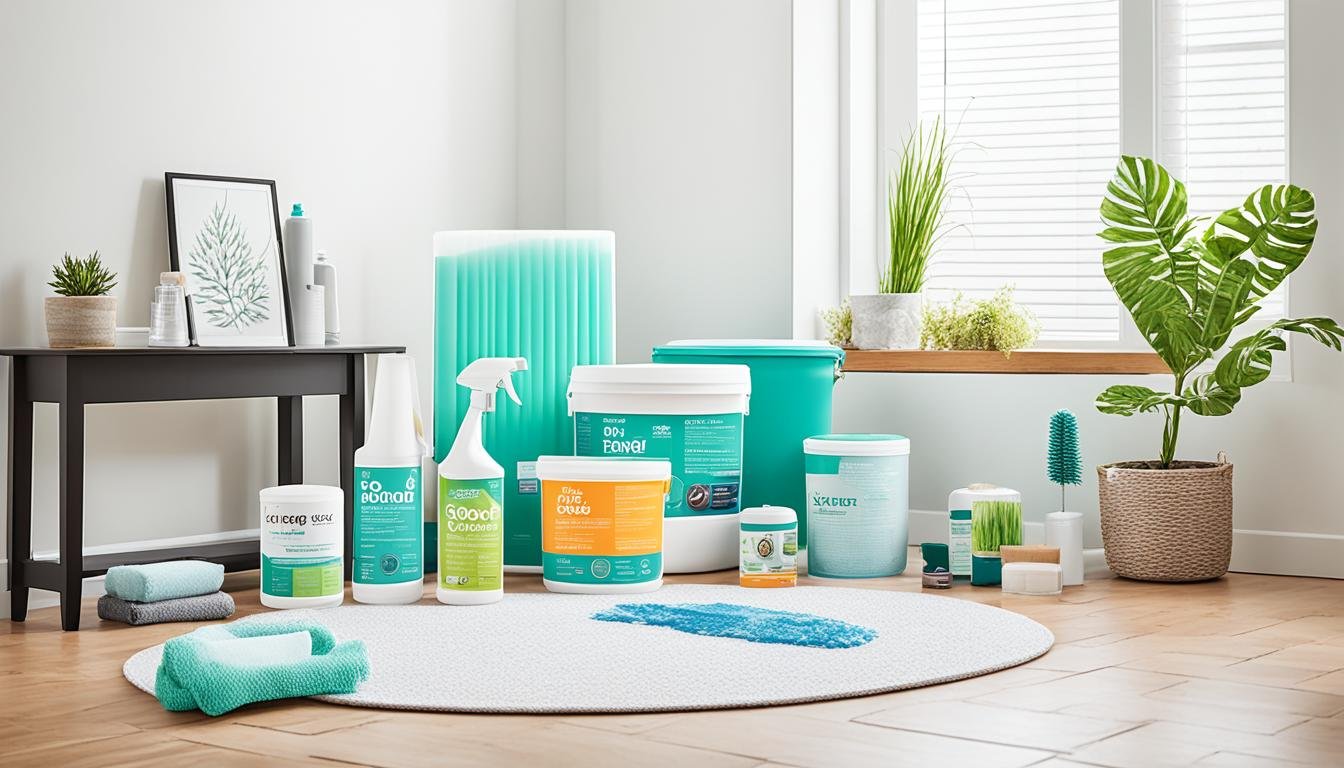Mold Prevention in Homes After Water Damage
Mold starts to grow quickly after water damage, sometimes within just a day or two. Shockingly, half of homes in damp places such as the Pacific Northwest have water damage. This means mold is a big worry for many. When there’s lots of water, mold has a good chance of showing up. Why? Because water is what mold needs to grow. To keep mold away, stop the air in your house from getting too damp. Use special tools that can suck up lots of water fast. For big water spills, these tools work great. Also, putting towels on wet spots can help soak up some of the water. And a dehumidifier fights off moisture too. Key Takeaways Mold can develop in as little as 24-48 hours after water damage, making timely action essential. Maintain a relative humidity level below 60% to prevent mold growth. Use specialized equipment like wet-dry vacuums and dehumidifiers to quickly dry out affected areas. Lay down towels to absorb excess moisture, an effective temporary solution. Addressing water damage swiftly and thoroughly is key to avoiding the health risks and structural damage associated with mold. Understanding Mold Growth and Its Consequences Mold is everywhere, especially in damp places. Its tiny spores float in the air. They need just the right conditions to start growing. This includes moisture, warmth, and something organic to feed on. What is Mold and How Does it Grow? In buildings with water damage or high humidity, mold is common. The spores land on wet surfaces and start to grow. Soon, they form larger and larger colonies. The perfect home for mold has leaks, damaged roofs, or high indoor humidity. Materials like drywall and carpet offer food for mold. It also loves hiding in places that are hard to see. Breathing in mold can cause problems. This includes issues with your breathing, allergies, and even infections. People with asthma or weak immune systems are at bigger risk. Mold smells bad because it releases certain chemicals as it grows. Mold Growth Factors Consequences of Mold Exposure Moisture Warmth Organic matter Respiratory problems Allergic reactions Infections To stop mold, we must understand how it grows. Fix leaks, keep air flowing well, and check your home often. This helps keep you and your house healthy. Mold Prevention in Homes After Water Damage Preventing mold growth is crucial after water damage. Mold can start growing within 24 to 48 hours. Your quick action is vital to protecting your home and health. Here’s what you need to do: Remove standing water: Use pumps, wet/dry vacuums, or other gear to get rid of standing water. This helps to stop mold from growing. Dry affected areas: To dry out damp spaces, use dehumidifiers, fans, and open windows. Keeping humidity low is key, as mold loves moisture. Disinfect surfaces: Use a plant-based antimicrobial solution to clean and sanitize. This kills any mold and stops more from growing. Replace damaged items: Saturated items like carpets and furniture may need replacing. This removes chances of mold development. Address leaks: Fix leaks around windows, doors, or gutters to keep out water. This helps avoid further water damage and mold growth. Hire professionals: For big water damage or mold issues, call experts certified by IICRC. They can properly assess and fix the problem. By acting fast and following these steps, you can cut down on mold risks. This protects your home from water damage’s harmful effects. Remember, quick action and professional help are key. “Proper and timely water cleanup can prevent mold growth after water damage.” – Environmental Protection Agency (EPA) Using these strategies after water damage can keep your home mold-free. This ensures a safe, healthy home for you and your family. Conclusion Mold can be a big problem after water damage, causing health and safety issues. It’s key to act fast. This includes removing moisture, drying things out, and disinfecting. Doing this helps stop mold from growing. It’s also vital to keep humidity low, fix any leaks, and replace badly damaged items. If mold is found, getting professional help is a good idea. In San Bernardino, Water Damage Pros are ready to assist 24/7. They offer expert mold prevention and removal. This keeps homes safe and healthy after a water problem. FAQ What is the importance of addressing water damage quickly to prevent mold growth? Water damage can quickly lead to mold. Mold can start in just a day or two. It’s important to get rid of extra water fast, dry everything well, and clean. Doing this helps stop mold from growing. It also keeps health and home damage risks low. What is mold and how does it grow? Mold is a fungus that loves wet places. Its tiny spores travel in the air. They look for warm, humid areas to grow. Mold needs moisture, warmth, and something organic to live on. It often shows up in damp places, like after a water leak. This can cause health problems and damage to your home. It’s best to tackle mold early. How can homeowners prevent mold growth after water damage? After water damage, act fast to stop mold. First, get rid of any standing water. Then, thoroughly dry everything. Clean hard surfaces with disinfectant. Replace things that are too damaged. Using dehumidifiers and opening windows can lower the risk of mold. Fixing leaks and keeping good air flow help too. If you find mold, have experts check and remove it. This keeps your home and everyone inside safe. Source Links https://jselabs.com/blog/prevent-mold/ https://www.windowworldtriad.com/article/a-homeowner-s-guide-to-mold-prevention-following-water-damage https://jenkinsrestorations.com/how-to-prevent-mold-after-water-damage/ https://www.health.ny.gov/publications/7287/ https://lifeafterdisasterstrikes.com/preventing-mold-after-water-damage/ https://www.buffalorestoration.com/article/understanding-and-preventing-mold-growth-the-new-normal-of-home-maintenance https://www.servicemasterrestore.com/blog/mold-damage/how-to-prevent-mold-after-water-damage/ https://www.restopros.co/ga-northeast/2024/04/16/7-tips-for-preventing-mold-in-your-home-after-water-damage/ https://www.frsteamdks.com/blog/mold-damage-posts/mold-prevention-flood/ https://greenworksllc.com/mold-after-water-damage/ https://www.linkedin.com/pulse/preventing-mold-after-water-damage-total-care-expert-tips-zack-bethea-p9kje https://firestonerestoration.ca/preventing-mold-growth-after-water-damage/



